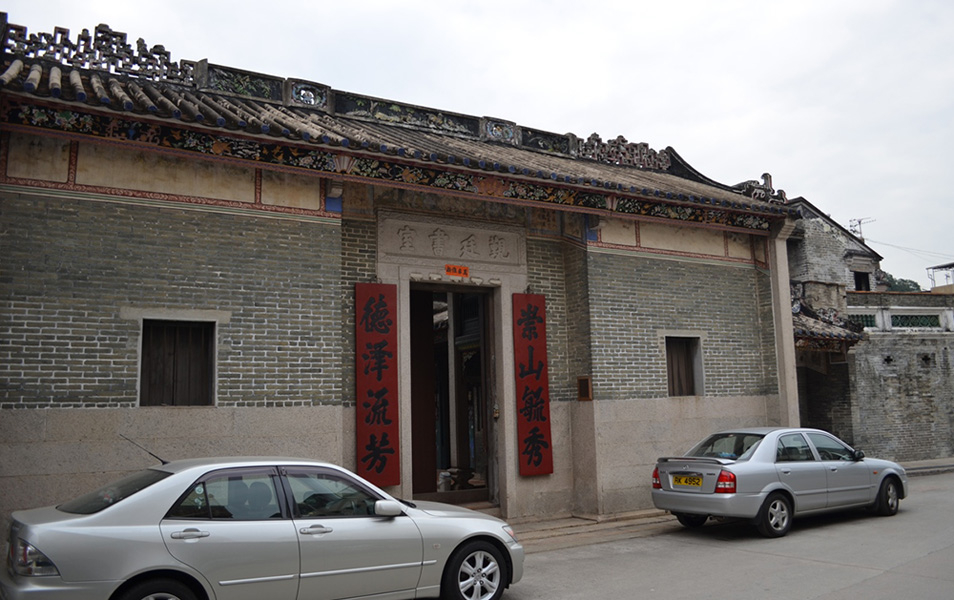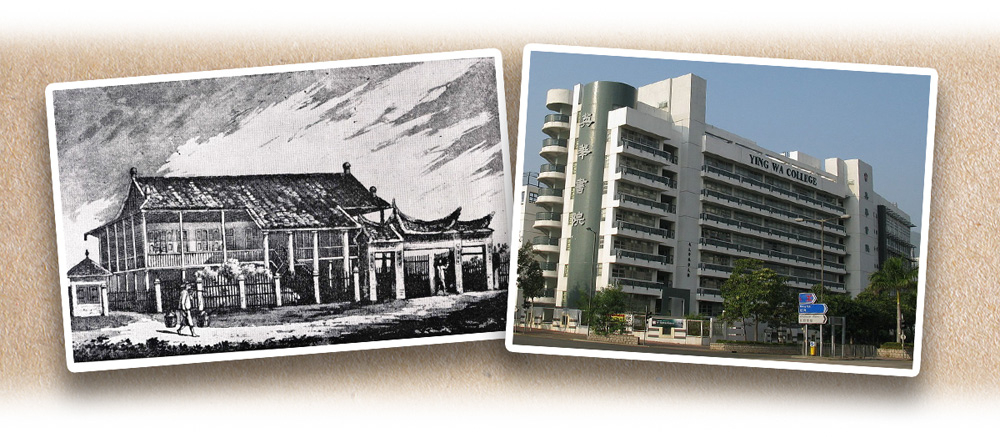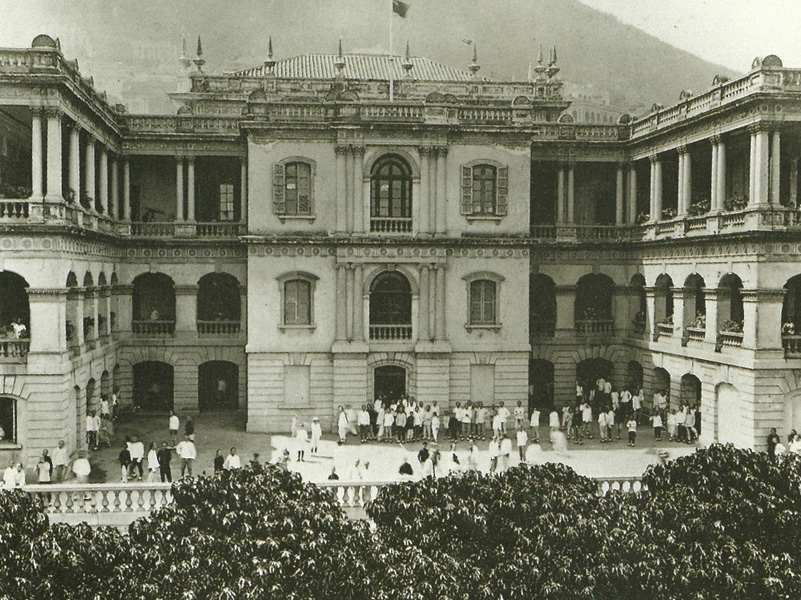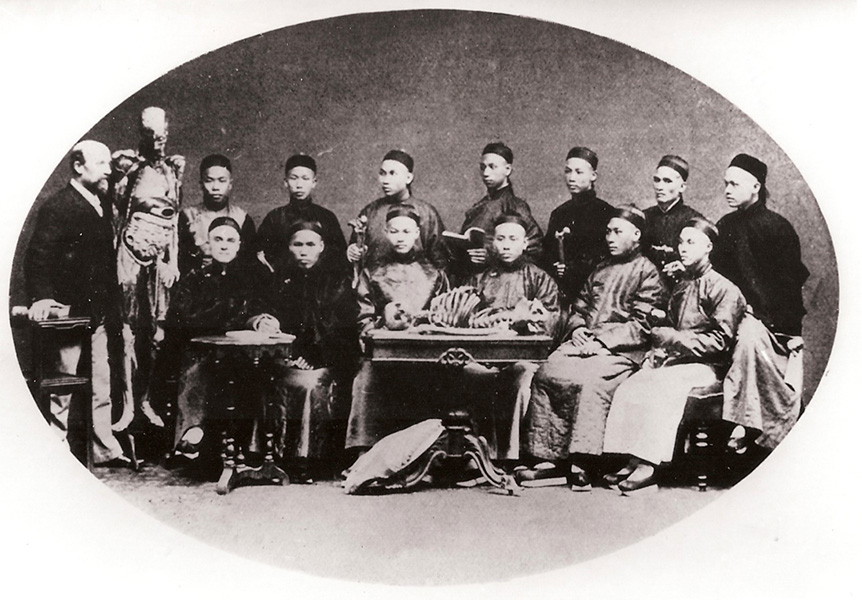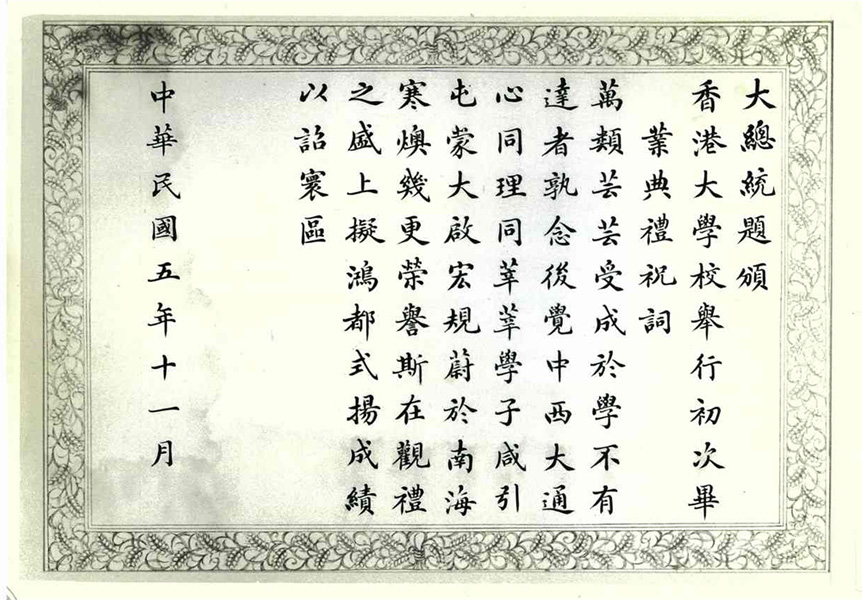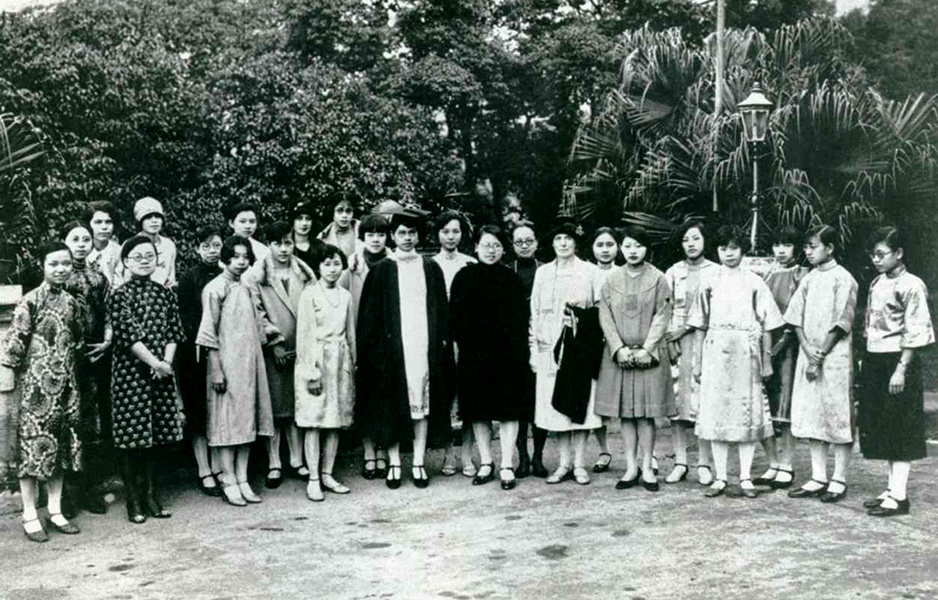Before the British settlement, there were colleges and private schools teaching traditional Chinese culture and knowledge in Hong Kong. The one with the longest history was Nik Ying Study Hall, the remains of which still existed during the early Qing dynasty (清朝). Founded by Tang Fu-hip (鄧符協) during the Song dynasty (宋朝), the study hall was set up more than a century before the famous colleges in Guangdong Province (廣東) including Yushan College and Fanshan College.
After Hong Kong was established as a free port, Christian schools and government schools were set up subsequently, including St. Paul’s College, Queen’s College, Ying Wa College, and King’s College. Advanced education system was introduced into Hong Kong through these Western-style schools, contributing to the development of Hong Kong.
To train Chinese doctors and nurses, and to spread Western medicine in China, a group of foreign doctors including Dr. Patrick Manson initiated to start a medical school with the help of Ho Kai (何啟). The College of Medicine for Chinese, Hong Kong was established in 1887. Renamed the College of Medicine, Hong Kong, or commonly known as the College of Medicine, it was the first tertiary vocational school in Hong Kong.
The University of Hong Kong was the first university in Hong Kong. It was officially opened in September 1912. Before the Second World War, some Chinese youths from the mainland and overseas studied in the University because of its reputation. Many of the graduates became influential representatives in the fields of education, medicine, and technology in the mainland. They include Lim Chong Eang (林宗揚), the Chairman of the Chinese Medical Association, Liu Xianzhou (劉仙洲), the Vice President of Tsinghua University, Shi Zhiren (石志仁), the Vice Minister of the Ministry of Railways, and famous aesthete Zhu Guangqian (朱光潛).
|
|
How did the Western-style education in early Hong Kong affect the development of modern Chinese society? |
|
|
See answer below. |
Kun Ting Study Hall in Ping Shan, Yuen Long, was a private school built in 1870. Before the British settlement, there were colleges and private schools teaching traditional Chinese culture and knowledge such as the Four Books and Five Classics. They prepared students for the imperial examination.
Left: Ying Wa College in Malacca; Right: present-day Ying Wa College in Hong Kong. Ying Wa College was established in Malacca in 1818 by Protestant missionary Robert Morrison. It ceased operation once and resumed in Hong Kong in 1914. Counting from its year of establishment, Ying Wa College is the oldest Western-style school in Hong Kong.
Western-style schools were established in Hong Kong within decades after it became a free port. The photos show present-day St. Paul’s College (left), a Christian school, and King’s College (right), a government school. Established respectively in 1851 and 1926, St Paul’s College and King’s College are still elite schools in Hong Kong today.
Queen’s College in the 1900s. Originally named The Government Central School, Queen’s College was established by merging four government schools in February 1862. Important figures in modern Chinese history, including Sun Yat-sen (孫中山), Ho Kai (何啟), Woo Lai-woon (胡禮垣), Tang Shaoyi (唐紹儀), Ho Tung (何東), and Lau Chu-pak (劉鑄伯) studied in Queen’s College.
Students at Queen’s College taking an examination in 1903. The Government Central School was renamed Victoria College in 1889 and Queen’s College in 1894. Queen’s College is still an elite school in Hong Kong.
A photo of teachers and students at the College of Medicine taken in 1893. Established in 1887, the College was the first tertiary vocational school in Hong Kong. It trained Chinese doctors and nurses, which helped spread Western medicine in China.
The University of Hong Kong in early days. Established in 1911 and opened in 1912, the University of Hong Kong was the first university in Hong Kong. It has nurtured numerous elites for Hong Kong and even China over a century.
In November 1916, President Li Yuanhong (黎元洪) wrote this commencement speech for the first graduation ceremony of the University of Hong Kong. This shows that the University was highly regarded by the Chinese government.
Female students at the University of Hong Kong in 1929. The University helped improve the social status of women through admitting and nurturing female students.
Left: children on Pottinger Street in the 1870s; Right: the Tanka children in Hong Kong in the 1920s. Although education was improved, it was not easy for children at grassroots level, especially girls and Tanka children, to receive education for a long time in early Hong Kong. It was not until 1978, which was 137 years after Hong Kong became a free port in 1841, that nine-year free education was implemented. (Photo source: Fotoe)
|
|
How did the Western-style education in early Hong Kong affect the development of modern Chinese society? |
|
|
The Western-style education in Hong Kong nurtured patriotic youths such as Sun Yat-sen, Ho Kai, and Woo Lai-woon. With new and revolutionary thinking, they brought new concepts and new knowledge to China to help promote the development of modern Chinese society. |
Unless otherwise specified, the images in this material are provided by Professor Lau Chi-pang and Professor Liu Shuyong. Every effort has been made to trace the copyright holders and obtain permission to reproduce this material. Please do get in touch with any enquiries or any information relating to this image or the rights holder.





